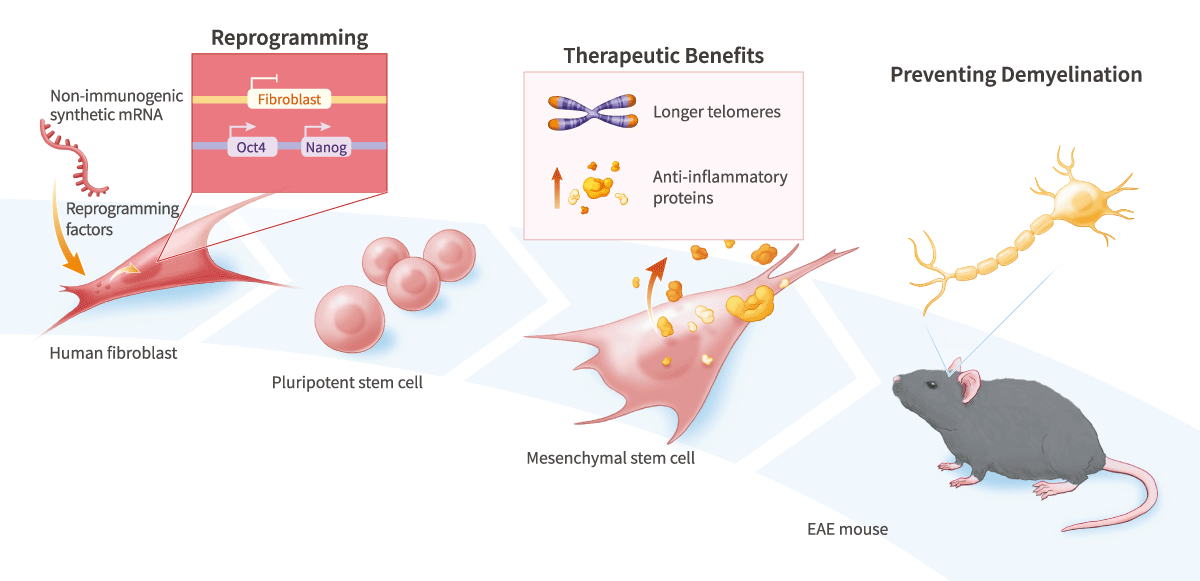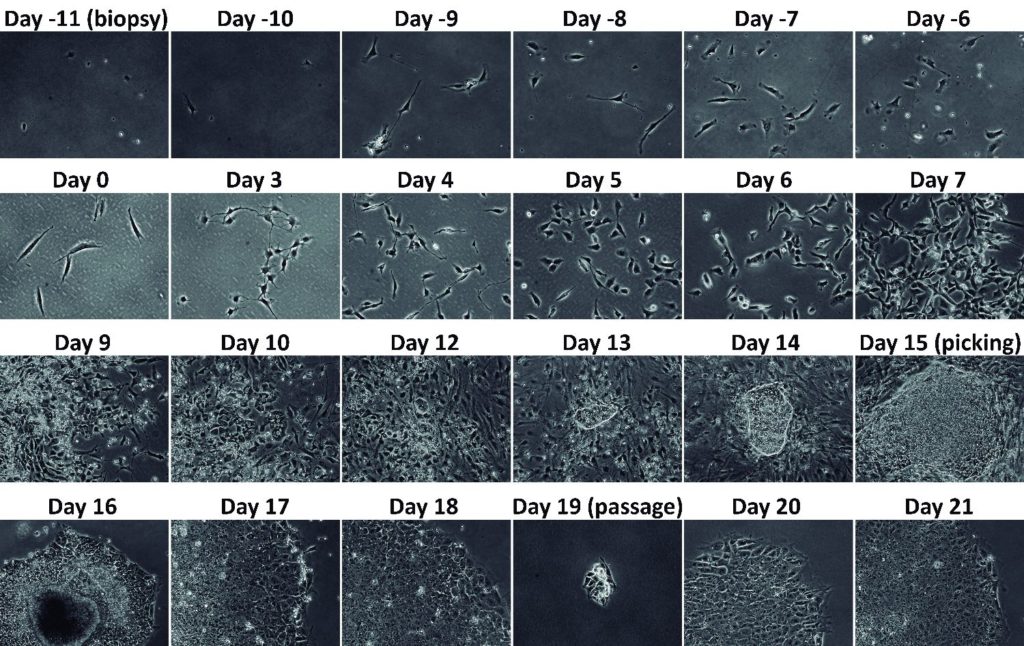mRNA Cell Reprogramming
Download our Technology Catalog
Overview
Conventional reprogramming methods (e.g., using Sendai virus or episomal vectors) can result in very low-efficiency reprogramming, can select for cells with abnormal growth characteristics, and can leave traces of the vector in reprogrammed cells.
Our scientists developed a technology for reprogramming cells that uses mRNA to express reprogramming factors2.
2Harris, J., et al. Mol Ther, Vol 28 No 4S1, 2020.
mRNA Cell Reprogramming is protected by fourteen U.S. patents, as well as patents in Australia, China, Europe, Japan, Mexico, and Russia (with additional patents pending in the U.S. and in other countries). Of note, certain granted patents include claims that are not limited by disease indication, cell type, reprogramming factor(s), mRNA sequence or chemistry, or method of transfection.
Example Applications
- Ultra-high efficiency reprogramming (e.g., reprogram single cells)
- Reprogram without using viruses or other potentially mutagenic vectors
- Reprogram cells quickly, and using a simple protocol (e.g., 4-6 transfections, pick colonies in 8-12 days)
- Reprogram without feeders, conditioning, passaging, immunosuppressants, demethylating agents or other toxic small molecules, pre-mixing or aliquoting of RNA solutions
- Reprogram using a completely animal component-free process
- Use for the development of allogenic or autologous cell therapies
- Combine with Factor’s Chromatin Context-Sensitive Gene-Editing Endonuclease and/or Factor’s Combined mRNA Gene Editing & Cell Reprogramming technology to generate models of genetic disease, gene-corrected patient-specific cell therapies, and allogeneic (i.e., immuno-nonreactive or “stealth”) cell therapies, including allogeneic pluripotent stem cell-derived CAR-T and CAR-NK cell therapies for the treatment of cancer, and engineered mesenchymal stem cell (MSC) therapies for regenerative medicine, wound-healing, inflammatory and auto-immune diseases, and tumor-targeting applications
Data


Representative Claim
U.S. Pat. No. 10,443,045
A method for reprogramming a non-pluripotent cell, comprising:
(a) providing a non-pluripotent cell;
(b) culturing the non-pluripotent cell; and
(c) transfecting the non-pluripotent cell with one or more synthetic RNA molecules,
wherein the one or more synthetic RNA molecules include at least one RNA molecule encoding one or more reprogramming factors;
wherein the transfecting results in the cell expressing the one or more reprogramming factors to result in the cell being reprogrammed; and
wherein step (c) is performed at least twice and the amount of one or more synthetic RNA molecules transfected in one or more later transfections is greater than the amount transfected in one or more earlier transfections to result in the non-pluripotent cell being reprogrammed and occurs in the presence of a medium containing ingredients that support reprogramming of the non-pluripotent cell.